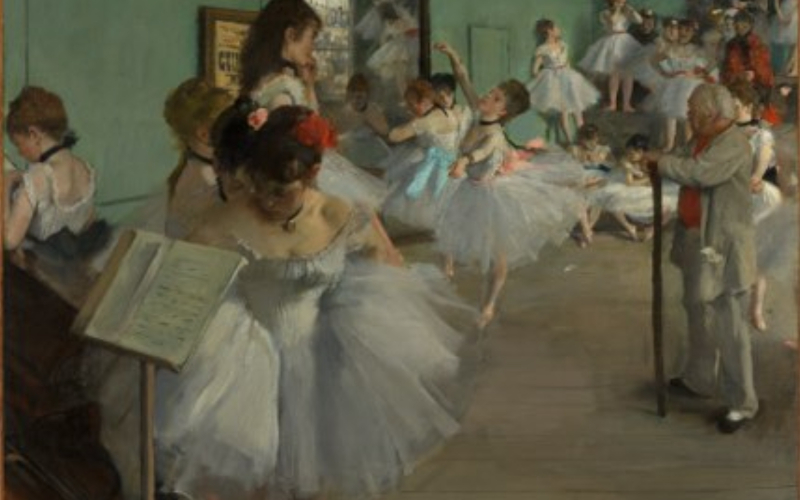Edgar Degas is well-known for his whimsical impressionistic depictions of ballet dancers. Each character’s pink cheeks and twirling tutus in soft hues evoke a playful voyeurism, as if each viewer of the tableau were seated in the performance halls represented. But a darker truth hides behind the glitz and innocence of youth.
History
Edgar Degas’ ballet paintings must be viewed in the context of the French social scene of the time they were created. In the years that followed the Franco-Prussian War’s conclusion, there was peace, prosperity, and significant economic growth.
In addition, Paris is becoming known for its fashion, art, and culture as new shopping centers spring up all over the city. The dancers are prepared to take the stage as the famed Parisian opera, the Palais Garnier, has just finished construction.
Impressionism was in full swing when, among others, Claude Monet, Camille Pissarro, Pierre-Auguste Renoir, Paul Cézanne, and Edgar Degas, their first official exhibition was held in Paris in 1874.
These significant developments have made way for enjoyment. As shown by many Impressionist works, wealthier Parisians could attend opera and ballet performances more frequently. However, these paintings can actually tell you two different tales: one of opulence and one of optics. It is alleged that viewers can detect the suggestion of ballerinas as sex workers and their audience as clients in Edgar Degas’ ballet paintings.
Rehearsal Rooms in Degas’ Ballet Paintings
The dancers leap onto the canvas during their rehearsal before a performance in Rehearsal of a Ballet on the Stage (1874). Their teacher or choreographer is in charge of them at the center. Two men are seated offstage to the right, watching the practice. As they sit in cozy reclined positions, the men’s strength is obvious.

As ballet’s popularity waned in the 1870s, dancers—many of whom came from low-income families—turned to other sources of income. Coming out of a difficult economic time during the war, some families of the young dancers supported prostitution. Prostitution, and consequently ballet, was a ticket to financial freedom.
Customers watch the girls dance in Rehearsal of a Ballet on the Stage before joining them, most likely in one of the backstage spaces that were used for dance rehearsals.
The star
Ballet (1876) is the painting by Degas that has come to represent the darker side of ballet paintings. Ballet, which has a single ballerina on stage, is frequently referred to as L’ Étoile because of the similarity to another work of the same name. A young dancer wearing a white tutu and floral accessories can be seen in the foreground. No one has been able to confirm the girl’s identity, but some believe it to be Spanish dancer Rosita Mauri.
Large expanses of color make up the scenery, the curtain, and the other dancers in the background. Black tuxedo-clad figure stands out against the background color. The character’s body and mask are intimidating, almost unsettling.

The young ballerinas who spent the most time with their fans backstage allegedly received better roles when they performed on stage. This awareness makes pictures like Ballet appear darker.

The atmosphere that emanates from each of Degas’ ballet paintings is palpable, despite the fact that it is obviously impossible to know the actual events that inspired them. The young dancers are portrayed from the pulpit in Musicians in the Orchestra (1872). While the others partake in communion behind her, the principal ballerina bows. The older musicians appear glued to the stage as they perform. There is no denying that Degas’s work contains voyeurism.
In Musicians in the Orchestra, the men take center stage, whereas in his images they are frequently on the sidelines. Despite the fact that girls are performing, the Palais Garnier was built with men in mind. Customers’ needs were taken into consideration when setting up the numerous rehearsal rooms at the theater’s back. The young dancers were considered to be merely byproducts of the performance. Even though the spectators themselves are not depicted in this image, the contrast between them and the young dancers is made very clear.
The majority of the dancers, known as “the little rats,” were under the age of 14. Despite how they appear in Belle Époque photographs, children’s lives were probably not easy.


